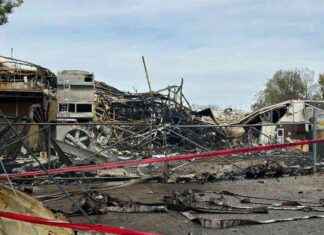Catalonia is one of the autonomous communities that loses more students between the ages of 16 and 17 than other autonomous communities and other countries. They are young people who do not study and most make the decision while they are still in ESO, or right when they finish it.
The schooling rate in these ages was 86.3% in the 2019-2020 academic year, which means that 13.7% had left high school or had not continued high school or secondary education after the ‘ESO. Only the Balearic Islands have a lower schooling rate (83.3%). Most communities are above 90%, and it is 97.5% in the Basque Country and 100% in Navarra.
In the case of Catalonia, nearly 10,000 teenagers a year (9,905) throw in the towel, half of whom end up obtaining their ESO degree. “The most serious thing is that they fall out of our hands while they are in high school”, lamented yesterday the director of the Jaume Bofill Foundation, Ismael PalacÃn, during the presentation of the study L’abandonamento a quarto de ESO. “It’s sad because these students, in another education system, would thrive.” Dropout, he concluded, is not an individual issue, but an “educational exclusion”.
The study by Jaume Bofill, prepared by Adrián Zancajo and Carlos Bueno, collects in detail the official statistical data for several years on school dropouts in Catalonia. Relevant ideas emerge. 61% of those who drop out of school (the term early dropout refers to 18- to 25-year-olds who have not completed a post-compulsory course such as high school or intermediate vocational training) do so in the fourth year of secondary school, half already with the title. According to the authors, this indicates a disconnection from learning at certain ages “which is very difficult to recover later”.
Another key fact. Dropout affects the entire population, 10% for natives, and 30% for students of immigrant origin or at risk of poverty (also for girls, who generally have higher schooling rates). Finally, of the students with some kind of disability, four out of ten do not enroll in baccalaureate or training cycles, which, according to Bofill, challenges the system to find more inclusive formulas for continuity, such as flexible baccalaureates, specific itineraries in all FP families or reservation of places.
Dropouts are also concentrated in a few institutes. Half of those who drop out study in 25% of the centers (about 200 in total). In centers of maximum complexity, one in four drop out, which “normalises” the phenomenon in the environment.
For PalacÃn, the Department of Education must lead this issue. “It’s about adapting to these young people and not for the young people to adapt to the system, because without studies they will no longer be able to have a job, but a decent life”. This does not mean that “the teacher fails” or that “the level is lowered”, but that it is necessary to accompany them in another way.
That is why he proposes specific plans and that more resources be provided, such as guidance counselors who accompany these students (what worries them, what problems, what interests or positive references they have) from the first to the fourth year of ESO. And that the task of re-gluing them is not left to the municipalities. Other possibilities are individualized plans in each course and salary grants.








